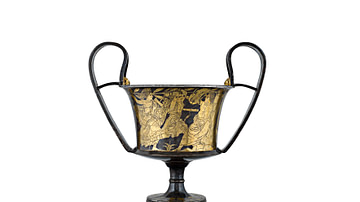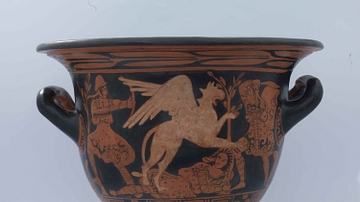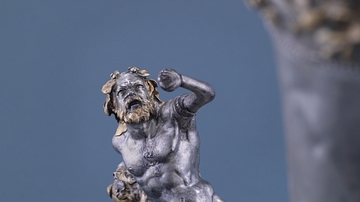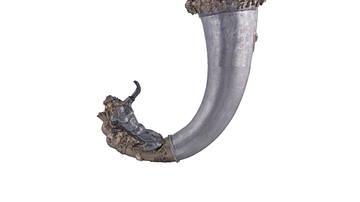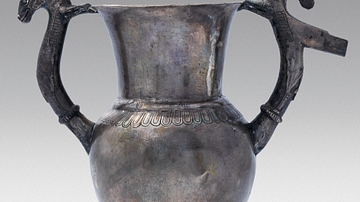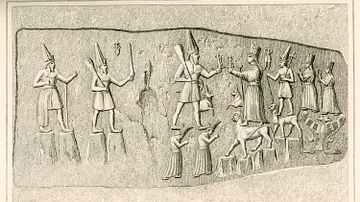Illustration
Certain types of figurines were commonly placed within foundations of buildings during the third dynasty of Ur (2100-2000 BCE) of the Neo-Sumerian Period, to commemorate the building of temples by the ruler. These three peg-shaped copper alloy figurines represent kings. Each figure carries a basket on his head and there are lines of cuneiform inscription on the body. Usually, such figures were buried with foundation stone tablets describing the building process. These three figurines are displayed within one case at the British Museum. From left to right:
1. Foundation figurine of Ur-Nammu, reigned 2112-2095 BCE. This came from the Temple of Inanna at Uruk.
2. Foundation Figurine of Shulgi (son of Ur-Nammu), reigned 2094-2047 BCE. From the Temple of Dimtabba at Ur.
3. Foundation figurine of Shu-Sin (son of Shulgi), reigned 2037-2029 BCE. From the Temple of Inanna at Girsu.
From Southern Mesopotamia, modern-day Iraq. (The British Museum, London).
Cite This Work
APA Style
Amin, O. S. M. (2018, February 28). Mesopotamian Foundation Figurines. World History Encyclopedia. Retrieved from https://www.worldhistory.org/image/8181/mesopotamian-foundation-figurines/
Chicago Style
Amin, Osama Shukir Muhammed. "Mesopotamian Foundation Figurines." World History Encyclopedia. Last modified February 28, 2018. https://www.worldhistory.org/image/8181/mesopotamian-foundation-figurines/.
MLA Style
Amin, Osama Shukir Muhammed. "Mesopotamian Foundation Figurines." World History Encyclopedia. World History Encyclopedia, 28 Feb 2018. Web. 27 Apr 2024.


